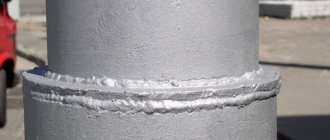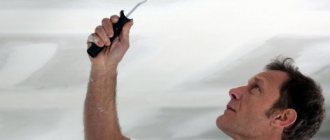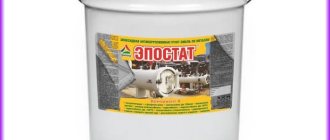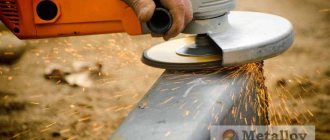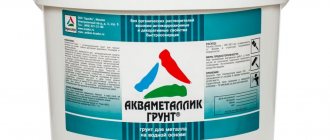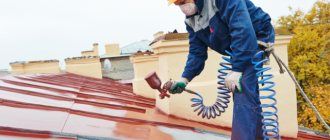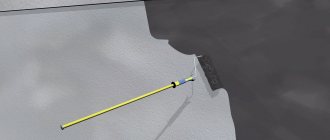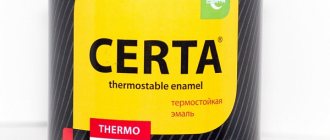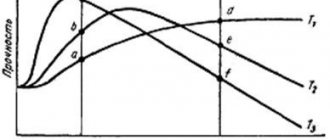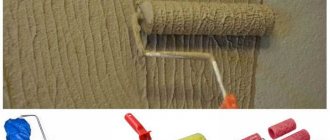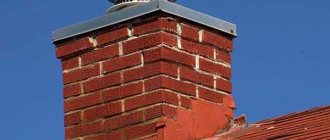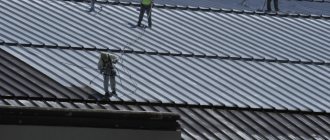How does corrosion manifest itself?
Scientists have found that about 10% of metal products per day “die” from corrosion. You can argue with this figure, but if you look around, you can easily find rust stains on a faucet, fence, window grill, car and other objects. If no action is taken, corrosion will quickly destroy the metal. And if replacing a rusty faucet is not a problem, corrosion on industrial equipment and critical structures can lead to irreparable results.
Surfaces that are most affected by rust are those that frequently come into contact with liquids or are exposed to high temperatures. Sometimes rust develops even under the paintwork as a result of damage that is invisible to humans, but, as a rule, foci of corrosion are clearly visible and appear as individual dots and brown spots. Iron oxides give a specific color. Experts distinguish the following degrees of rust damage to metal:
- corrosion stains – they are characterized by a small depth, and development begins in width;
- pitting – small spots penetrating deep inside. If their development is not prevented, through holes will appear in the material;
- through – complete defeat, destroying the structure of the part;
- under-film – the source of rust is located under a layer of paint, which begins to swell over time. It happens that such corrosion does not manifest itself at all until the metal is completely destroyed. Such damage carries the greatest danger, because it is an invisible enemy.
How to protect metal from corrosion? You just need to properly apply paint, varnish or other protective coating and update it periodically. Many people make the mistake of applying paint over the area of corrosion and hoping that the affected area will not grow. The adhesion of paint to a loose rusty surface is low, so the paint will soon crack and make the metal structure vulnerable. That is why before painting it is necessary to remove all traces of corrosion, and along with them all types of gnawing and old layers of paint. The old coating cannot be a high-quality basis for the new one, so it should be disposed of immediately.
How to treat metal from rust before painting
Treating metal from rust before painting is a necessary part of repair work, the purpose of which is not only to temporarily return the material to its decorative appearance, but also to ensure its safety and extend its service life for as long a period as possible. The process of destruction of a metal surface begins in the most vulnerable places, and their cleaning and painting is carried out to stop further destruction and create a protective coating in order to prevent this from happening in the future.
Rust can also occur under the paintwork if the surface has not been sufficiently cleaned, so processing requires care and technology.
Rust removal methods
Rust is treated and removed using several successful methods. The required method can be determined based on the degree of surface destruction the corrosion has reached and the extent of the damage caused by it. How to treat a surface in need of improvement? It all depends on what available material is within reach.
Painting, applying varnish or another protective layer is the best way to protect metal from corrosion, which is available at home without the use of industrial products.
There are several common methods for treating metal before painting:
- remove rust using chemicals;
- remove rust from metal by mechanical means (using a wire brush, scraper, sandpaper);
- remove rust from metal using a grinding device;
- treat the product thermally (with an oxygen-acetylene torch you can burn a layer of scale, old paint and rust).
There are also industrial ways to get rid of corrosion scourge - for this, sandblasting or shot blasting using special equipment is used.
In industrial production, rust can be removed by treating the surface with a converter. For these purposes the following is used:
- oxidation (creating a protective film on metal using oxides);
- phosphating (phosphate films under the influence of orthophosphoric acid);
- nitriding (saturation of the steel surface with nitrogen);
- cementation (combination of metal with carbon using a chemical reaction);
- bluing (combination with organic substances);
- changing the composition of the metal by introducing anti-corrosion additives into it.
Alternative methods involve using tannic acid or Coca-Cola to convert the rust into iron tanate or iron oxide pigment.
Rust cannot be removed by washing under a tap and cannot simply be painted over, because the adhesion of the paint to the surface will be minimal and the applied layer will not last long. After a short period of time, paint applied to an uncleaned surface will begin to flake and flake, and the process of rusting and damage will spread further.
No painting process will prevent damage to a metal product unless the problem surface is thoroughly cleaned first.
On video: 5 ways to remove rust.
Chemical cleaning method
Each method of dealing with rust has its positive and negative sides. Chemical removes not only old paint, but also fatty compounds, petroleum products and other contaminants. For this purpose, special solvents or removers are used, which contain chemically active substances.
The treated metal is washed off with water, if a composition that is a washable soil converter was used, and quickly dried. When cleaning a surface with acids, inhibitors are added to the cleaning composition to slow down the action of the chemical.
Hexamine is added to hydrochloric acid, butyl alcohol or tartaric acid is added to orthophosphoric acid.
The chemical composition can be applied using a spray or brush, observing the necessary safety regulations as much as possible and using personal protective equipment.
One of the most effective cleaning methods is electrochemical, but its use requires certain industrial equipment.
For surfaces with deep corrosive penetration, lactic acid and vaseline oil are used, which are used to treat the affected area in the acid-oil sequence. The acid turns the rust into an iron salt, which is then dissolved by petroleum jelly.
Mechanical and thermal treatment
Using heat treatment, the iron surface is cleaned with an oxy-acetylene torch. But this method has practically ceased to be used, because it removes all mill scale, but not all of the rust burns out.
In addition, the use of a torch creates certain inconveniences in auto repair shops, and in the hands of an amateur it can be a dangerous equipment.
Therefore, the burner is practically not used when working on metal related to rust removal.
Previously, this method was considered effective, but with the advent of active methods of industrial chemistry, it ceased to be relevant and is now practically not used.
The mechanical method, carried out before painting the surface, consists of removing the top loose layer using manual cleaning methods - a scraper, a wire brush or a metal brush and sandpaper (coarse and fine-grained).
Afterwards, a rust converter is applied and left for several hours until the corrosive layer is completely dissolved. If after such a step-by-step treatment the rust is still visible, this means that the process has gone deeper than expected. In this case, step-by-step processing is repeated.
If a sanding machine is used, the process is greatly facilitated, but the top layer is still removed manually, and the machine is used when there are no loose substances left.
Under no circumstances should you work without personal protective equipment. Overalls and gloves should protect the body and hands, it is recommended to cover the face with a respirator to protect the respiratory tract from foreign particles and chemical fumes, and cover the eyes with safety glasses.
After removing the rust and before applying paint, the metal surface must be primed with a special compound and allowed to dry.
Modern industry has developed paints that contain special components that replace primers; in this case, the surface can be painted without priming.
With proper and timely care, these labor-intensive processes can be avoided. You just need to carefully monitor the condition of the metal surface and know how to treat rust.
How can you remove corrosion from metal?
Humanity has come up with many ways to remove traces of rust from a metal surface. Professional methods include:
- mechanical;
- chemical;
- thermal.
In addition, there are a number of home methods based on chemical reactions and mechanical removal of damage.
The product is chosen based on the extent of the corrosion and the damage it has caused. If rust has just “attacked” the product, then you may be able to cope on your own, using improvised means. On a large scale and to obtain a more effective result, it is better to resort to the use of professional products and not try to fight rust at home to avoid the risks of decomposition.
Preventing rust formation on metals
To avoid the need for radical cleaning of pipes, radiators or car bodies, metal products need to be looked after. If you take care in advance and do not forget about preventive measures, iron parts will last a long time. The following rules must be followed:
- Keep iron away from moisture.
- Treat it regularly with a rust preventative.
- Restore small corrosion spots without waiting for the old paint to peel off.
After eliminating the corrosive layer and before painting, you need to treat the metal object with a protective composition against rust and let it dry.
When you decide to carry out anti-corrosion measures, do not forget about personal protective equipment: a respiratory mask, gloves, goggles. Especially if you work with caustic chemicals or power tools.
Mechanical cleaning
The mechanical method is considered labor-intensive, but gives excellent results. Cleaning occurs with hand or power tools. Sandpaper, wire brushes, grinders, as well as abrasive compounds based on sand or sand and water are used. As a result, it is possible to achieve a rough surface that has high adhesion to paint.
The following products are used for mechanical cleaning:
- Pwire brushes. These are special tools with a fairly rigid base. With the help of human power, under pressure, they influence the steel product, as if scraping off traces of decomposition from it. Basically, it is used to eliminate small pockets of corrosion, as well as to clean welds during primary finishing. The method does not allow achieving high quality cleaning, since the brushes do not remove scale at all. In addition, the process generates a large amount of dust;
- grinding discs. This is a much more effective method that allows you to remove all rusty plaque. The method is suitable for small defects and is used during restoration work. If there are loose layers, then it is better to remove them manually, and only then take on the sanding discs. Decent results can be achieved if you use high-quality grinding wheels. True, this method also has some disadvantages. You will need expensive consumables and certain skills in working with the tool;
- in a sandblasting unit, the damaged surface is treated with sand or other abrasive, which, under high air pressure, flows out through a tube and acts on the surface, completely cleaning it of rust and dirt deposits, even in the most inaccessible places. The advantage is that both river and construction sand microparticles are taken for sandblasting (the size and shape of the particles may differ depending on the technology and installation), moreover, they can be easily reused. However, when the same sand is reused, the processing efficiency decreases and the amount of dust increases.
- d hydroabrasive cleaning (water sand blasting) uses a similar principle, but in this case cleaning occurs under a powerful stream of water and sand. Processing can occur at different pressures. Ultra-high pressure (more than 1700 atm) is used when it is necessary to completely remove all traces of heavily ingrained rust. At high pressure (700-1700 atm), most of the rust and paint are removed well; minor traces may remain, which also disappear with longer treatment. Cleaning at a pressure of 350-700 atm allows you to get rid of the old layer of paint, dirt and some rust, but magnetites will still remain on the surface. Treatment at pressures up to 350 atm is used mainly for preliminary cleaning of the surface, removing dirt and flaking paint. Cleaning at a pressure of 6-8 atm allows for the most economical use of abrasive and reduces the level of dust formation, but secondary rust may occur after cleaning. Waterjet cleaning is considered complex; such an installation is not easy to construct, and only professional, experienced specialists should work with it.
After mechanical processing, a rust converter is applied to the metal surface. When it dries, evaluate the result. If there is still rust, then re-treat. All work is performed in personal protective equipment: overalls, goggles, respirator.
How to remove rust from metal before painting a car
The appearance of rust on metal surfaces is a bad sign.
How to wash off the ceiling before painting with water-based paint? And it's not just about the unattractive appearance. Any corrosion over time leads to partial or complete destruction of metal products if effective measures are not taken to eliminate this defect in a timely manner. Let's look at the best way to treat rust and how to prevent it from appearing in the future, before applying paint.
How to remove and treat rust, how to treat a place cleared of rust Subscribe to the channel...
Main types of corrosion
To determine which methods should be used to treat rust, first of all, you need to understand what types of corrosion exist and how they manifest themselves.
Rust is classified according to several parameters regarding the degree of damage:
- Shallow corrosion stains that spread across the width of the metal surface rather than in depth.
- Small dots that penetrate deeply into a metal product.
- Through corrosion of metal.
- Subfilm type corrosion, in which rust occurs directly under the coating - in such areas, layers of paint usually swell. It is imperative to pay attention to such phenomena in order to prevent the destruction of the metal product.
Main types of corrosion
Processing methods
When starting to paint metal products that show signs of corrosion, it is imperative to properly treat the rust. There are three different methods for these purposes:
In cases where it is necessary to process rust on an industrial scale, special converters or devices designed for shot blasting or sandblasting are often used. Let's consider what properties each type has.
Mechanical method
The leader in the ranking of efficiency and reliability is the mechanical method of cleaning metal products from rust. It can be performed using both hand and mechanized tools.
Before painting metal products, corrosion can be removed using equipment such as:
- sandblasting unit;
- grinding wheels;
- wire brushes;
- water sand blasting machine.
During sandblasting, the damaged surface of a metal product is exposed to a jet of sand, which is supplied under high pressure. Water-sandblasting (or, in other words, waterjet) treatment is carried out in almost the same way, except that in this case sand or other abrasive material is mixed with water.
Water jet corrosion removal is a method suitable exclusively for use in industrial environments. It can be carried out under various degrees of pressure: low, high and ultra-high.
If you need to clean small metal areas before applying paint, just use simple wire brushes.
Also, with the help of these hand tools, primary metal processing is performed.
True, this option is not without certain disadvantages: a large amount of dust is generated during operation, and the result obtained is far from ideal, even if you do everything correctly.
Special grinding wheels give better results compared to brushes. They are usually used in cases where it is necessary to effectively process small or medium-sized metal surfaces. For best results, high quality abrasive wheels should be used before applying paint.
These products differ from each other in shape, as well as in the type of abrasive.
The main types of abrasive wheels are:
- with straight profile;
- with a ring profile;
- conical;
- cup-shaped
The most durable and high-quality abrasive materials used in the manufacture of grinding wheels include diamond, electrocorundum, silicon carbide, CBN, bakelite, vulcanite, and some others. When choosing suitable abrasive wheels for removing rust before painting metal, it is important to pay attention to several parameters:
- The hardness of the wheel must exceed the hardness of the surface being treated.
- The grains for rust removal should be moderately large.
- The diameter of the circle should be selected in accordance with the area of the metal surface being processed.
These products are also suitable for effectively removing residues of old paint and other paints and varnishes from metal.
Chemical method
Speaking about the chemical method of treating rust, it should be noted special converters, which are very widely used at present.
Rust converters may differ in the form of release and the method of application to the metal surface, but they all lead to a similar result. They are often used before painting metal surfaces.
Modern industry offers rust converter in three main versions:
- liquid;
- gel-like product;
- aerosol.
The principle of operation of the converter is as follows: phosphoric acid, which is the main active component of the product, begins to actively contact the oxidized metal surface, resulting in the formation of a microscopic film that is absolutely impermeable to oxygen. Consequently, without the possibility of access to the oxidizing agent, the chemical reaction stops, and the metal product is no longer destroyed.
When using the converter, you must observe safety precautions and strictly follow the attached instructions.
You can make a high-quality and efficient converter yourself. For these purposes, it is recommended to use water, as well as citric and oxalic acids, mixed together in equal proportions. Another important ingredient of such a converter is soda - 1 tsp. for 1 liter of water.
To treat, you need to moisten a soft cloth in the resulting solution and vigorously wipe the affected metal area with it.
Thermal method
In addition to special converters and abrasive wheels, a thermal method is often used to remove signs of corrosion before applying paint to metal objects.
It consists of using a special oxygen-acetylene torch, with the help of which the entire affected metal surface prepared for cleaning is intensively processed.
As a result of this procedure, mill scale and old layers of paint are almost completely removed.
For preventive purposes, it is recommended to regularly inspect metal products and use high-quality products with anti-corrosion properties for maintenance.
Choose the most appropriate rust removal method depending on the area and nature of the damage. For best results, purchase only the most reliable materials and products for these purposes.
Additional Information:
Rust can be divided into several types; traces determine its character, and the method of elimination must be chosen based solely on its characteristics. The main types are dry and wet.
Dry appears when the car is in a warm room. With dry corrosion, the metal parts of the car take on a dark color and will require an anti-corrosion coating.
Wet occurs from constant contact of the car with moisture.
This is especially facilitated by dirt adhering to the car body, inside which moisture remains for a long time. It is this type that poses the greatest danger to metal.
Every car owner has encountered the phenomenon of rust forming on the body of a vehicle. You can remove red spots from the surface yourself using folk remedies. You can often hear the question: how to remove rust from a car body without damaging the paint?
Unfortunately, this is not possible. After all, rust does not form on the surface of the paintwork, but on the metal.
The bodies of all cars are subject to corrosion, but it can and should be combated. In this article I will tell you how to independently get rid of rust on the body of your favorite car, and thereby extend its life and improve its appearance. Means for degreasing metal surfaces before painting?
I will tell and show everything using the example of my own repairs. I did everything for the first time and it turned out very well. So, I think any car enthusiast can repeat this and save a lot of money on body repairs. So let's get started...
Rust, which is an iron oxide, can be caused by contact of the car's surface with air or moisture. If you do not start fighting this phenomenon in time, it will soon corrode the surface of the car body. This will require welding metal sheets to the body, which obviously will not make the car presentable.
Even shallow corrosion significantly reduces the strength of the metal, making it susceptible to deformation.
To remove rust from a car body, it is not at all necessary to contact a company car service center. Is it necessary to putty the metal before painting the car? Many car enthusiasts can remove small stains of corrosion and chipped paint on the car body, doors or hood with their own hands.
Removing rust from the body will extend the life of your car and improve its appearance.
A red scourge called rust plagues many car enthusiasts.
The less protected the car body is from corrosion at the factory (galvanization), the more often the owners will have to make efforts to eliminate red spots.
Moreover, it is undesirable to delay liquidation, since over time, damage to the metal only increases. As a result, in six months you will have to spend much more time and money than today.
So, what will you need to remove rust and saffron milk caps with your own hands and how to remove them without harming the body.
Treating metal from rust before painting is a necessary part of repair work, the purpose of which is not only to temporarily return the material to its decorative appearance, but also to ensure its safety and extend its service life for as long a period as possible. The process of destruction of a metal surface begins in the most vulnerable places, and their cleaning and painting is carried out to stop further destruction and create a protective coating in order to prevent this from happening in the future.
The body of a car is one of its most expensive parts, so you should spare no time or money to keep it in satisfactory condition.
The fight against corrosion is effectively carried out by specialists at service stations, but annual preventive maintenance takes up a significant part of the family budget.
You can remove rust from a car with your own hands; this requires a minimum of tools and skills.
- Pitting corrosion. With such corrosion, rust spots can be seen on the surface of the metal. The development of such corrosion occurs deep into the material. If such corrosion is started, it will develop into through corrosion.
- Corrosion is through. This is the last stage in which the metal is destroyed.
Chemical stripping
Pickling with solutions is one of the best options, since rust breaks down under the influence of chemically active substances. The compositions are applied using brushes or by spraying. They can be roughly divided into two categories:
- Washable substances work effectively, they must be washed off with water after the reaction, and when exposed to water, new foci of rust will appear . Therefore, after washing with the product, the element must be thoroughly dried and coated with an anti-corrosion layer;
- non- washable , so-called primer-converters. The product of the reaction between the product and rust can hardly be called a full-fledged primer, but it does not need to be washed off with water, and this is a big plus.
The chemical method allows you to remove not only rust, but also various types of contaminants. For this, various removers and solvents are used:
- A good way to remove rusty deposits is a 5% aqueous solution of sulfuric or hydrochloric acid . But an inhibitor must be added to them, which can slow down the reaction. It is important to understand that it is strictly not recommended to use acids without it, since this can damage not only the steel, but also negatively affect the human body. Hexamine is added to hydrochloric acid, and tartaric acid or butyl alcohol orthophosphoric
- heavily affected surfaces are treated with a mixture of lactic acid and petroleum jelly. Under the influence of acid, rust turns into iron lactate, which, like a salt, is easily dissolved by petroleum jelly. Upon completion of work, the part is wiped with a rag.
Even more effective cleaning can be achieved using the electrochemical method , but its implementation will require complex industrial equipment and special conditions.
How to treat metal from rust before painting: liquids and other means
Rusted metal cannot be painted without first cleaning it. Even expensive paints and varnishes that do not require corrosion are applied to clean surfaces. In this case, there is no need to carefully remove red marks and use converters. But you still need to clean it. However, if you know how to treat rust before painting, the cost of the procedure will be low.
Where rust must be removed before painting
It is useless to paint rusty surfaces - the coating will begin to swell and peel
Almost all metal objects suffer from corrosion: tools, electrical appliances, household items.
Car enthusiasts are often busy solving the problem: rusty spots do not paint car bodies.
But household items are also susceptible to this “disease”: faucets, metal pipes, window grilles, door handles, radiators.
The reason why a layer of rust forms is the influence of unfavorable external factors, primarily water.
A chemical reaction occurs on the metal surface, because of which the previous appearance of the thing and its functional qualities disappear. Before painting, rust treatment is required. Otherwise, the new coating will begin to swell and peel off.
Methods for removing corroded layer
On an industrial scale, when a thick layer of rust on a large product requires removal, sandblasting or shot blasting is often used. But simpler and less expensive methods are used in everyday life.
Chemical reagents
To treat metal from rust, special solvent preparations or washes containing highly active components are used.
The cleaned metal is washed with water and quickly dried if a composition related to washable soil converters has been selected.
When treating metal parts with acidic preparations, inhibitors are used as additives in the cleaner to slow down the action of the chemical.
Hexagon is suitable for hydrochloric acid, butyl alcohol is suitable for orthophosphoric acid.
If the metal is heavily corroded by rust, proceed as follows:
- Mix petroleum jelly and lactic acid.
- When the rusty layer transforms into iron lactate, the Vaseline-based component dissolves it.
- After cleaning, wipe the part with a rag.
Chemicals are sprayed onto the surface or applied with a brush, observing the necessary safety requirements to the maximum.
To treat household items against the effects of corrosion, household chemicals based on phosphoric or oxalic acid are used.
Liquids such as Cinderella, Topperr and Furman are effective against rust, but their fumes and caustic properties can be harmful to your hands and eyes. To protect your respiratory system, you should wear a “petal” mask.
Sometimes Domestos is used, but it will not clean old rust. This option of household chemicals is more suitable for preparing a bathtub for renovation with acrylic.
Folk remedies
Removing the rusty layer from a metal part is also possible using simple components that are found in every kitchen. Home remedies for treating metal rust before painting:
| A drug | Preparation and application | Cleaning time |
| Lemon acid | Pour the packet of powder into a bowl and pour boiling water over it. When bubbles appear, the rusty piece of iron is placed in a container. You can add water so that the item is completely immersed in the solution. | 12 hours |
| Baking soda | Mix the powder with water until it becomes a thick paste. Apply to a metal object, rinse after the required period and leave to dry. To remove soda solutions, use a toothbrush. | 12 hours |
| Oxalic acid | Wash the iron object with any household chemicals, rinse and dry. Prepare a mixture based on five large spoons of acid and 250 ml of water. The rusted product is dipped into it and, after the required period, is wiped with a toothbrush. Then rinse thoroughly and dry. | 20 minutes |
| Lime or lemon with salt | The rusty item is tightly covered with salt. Squeeze lime or lemon juice on top. The result is a thick paste. When the reaction passes, remove the residue with a citrus peel, rinse with water and dry. | 12 hours |
| Potatoes with laundry soap | A tuber cut in half is rubbed with laundry soap. This speeds up the chemical reaction. Place half of the potato on the rusty object and wait the required time. Instead of soap, you can use baking soda or salt. | 2 hours |
| White vinegar | To remove a layer of rust before painting a piece of metal, it is dipped in a tank of vinegar. If the object is large, soak a rag in the liquid and wrap the parts or wipe it thoroughly. | 12 hours |
Rusty metal is treated with tomato sauce, paste and even Coca-Cola. These food products easily cope with the problem. Alkazeltzer, previously diluted in water, also works as a medicine.
These compounds are weaker than specialized household chemicals, but they are cheap and not too dangerous to health, provided that you do not breathe in them. To be effective, the procedure can be repeated two or three times.
Instrumental methods
Oxy-acetylene torch
Removing the rusty layer with special tools leads to the surface becoming rough. This improves the adhesion of paint to metal products.
The devices used to combat rust are mechanical and manual: a grinder with metal attachments, scrapers, steel brushes and grinding wheels.
In the garage, you can clean metal products with abrasives - a sand-water mixture or shot with sand. If the metal has just started to rust, use a sheet of sandpaper or a velvet file.
Peeling pieces are cleaned with rags or masking tape.
An excellent mechanical anti-rust agent is wheels for an angle grinder. They are used when it is necessary to quickly and thoroughly process small rusty parts. The circles vary in shape and type of abrasive particles.
When choosing grinding discs, you should take a closer look at the following nuances:
- The grain size should not be too fine.
- It is better to take a hard disk so that its indicator is higher than that of a rusty surface.
- The cross-section of the product is selected depending on the size of the metal product that will be processed.
Such devices will remove not only the rusty layer from the metal surface, but also the ancient paintwork.
To remove the corrosive layer before painting, the thermal method is also used. A specialized tool is required - an oxygen-acetylene torch. With the device turned on, they pass over the surface of the rusty product and clean out corrosive lesions. The result of this effect is almost perfect smoothness of the metal. Heat treatment can remove old rust stains.
Preventing rust formation on metals
To avoid the need for radical cleaning of pipes, radiators or car bodies, metal products need to be looked after. If you take care in advance and do not forget about preventive measures, iron parts will last a long time. The following rules must be followed:
- Keep iron away from moisture.
- Treat it regularly with a rust preventative.
- Restore small corrosion spots without waiting for the old paint to peel off.
After eliminating the corrosive layer and before painting, you need to treat the metal object with a protective composition against rust and let it dry.
When you decide to carry out anti-corrosion measures, do not forget about personal protective equipment: a respiratory mask, gloves, goggles. Especially if you work with caustic chemicals or power tools.
Heat treatment
This method involves exposing rust formations to extreme temperatures. For this, an oxy-acetylene torch , which with a strong flame eliminates almost all mill scale, but not all rust. That is why today the method is used very rarely.
Sometimes cleaning with live steam , which is supplied under a pressure of 100-120 atm. This option is not suitable for removing rust, but it copes well with dirt, and the metal surface dries much faster than when treated with water, which reduces the risk of secondary rust.
What is the problem with rust?
Rusting of steel structures is a multi-stage process, including up to a dozen chemical reactions flowing into one another. There are three mandatory conditions for rust to appear: the presence of oxygen, water in any form and certain impurities in the molten steel. It is the presence of carbon or sulfur in the steel that contributes to the destruction of the layer of rust that has formed and the exposure of more and more new layers of metal. The process can be greatly accelerated in the presence of salts or increased acidity. The sources of the latter can be solutions of carbonate and sulfurous acid in atmospheric moisture.
How to remove rust at home?
If corrosion has not yet eaten into the metal, and the part or structure itself does not perform any important tasks, then you can try to remove the rust using improvised means. People's ingenuity has allowed us to develop several interesting and effective means:
- white vinegar can dissolve rust; to do this, the damaged part is immersed in vinegar for several hours, after which the loose rust is removed mechanically. If the object is large, then vinegar is simply poured onto the surface. You can use aluminum foil, dip it in vinegar and use it instead of a bench brush. Regular vinegar will also work, but the processing time will increase to 24 hours. In some recipes, white vinegar is mixed with salt (1 tablespoon per 300 ml of vinegar) and flour , the damaged areas are treated with the product, then washed off;
- baking soda can be diluted with water to the consistency of liquid sour cream so that the composition can be applied to the surface. Cleaning is done with a toothbrush, then the surface is rinsed;
- You can thoroughly sprinkle the damaged surface with salt , then squeeze lime or lemon juice . Try to squeeze out as much of it as possible. Leave for 2-3 hours, and then clean the surface, you can use a brush or lime peel for this;
- citric acid can be poured with warm water into containers of the required size and the damaged part can be placed there. The appearance of bubbles indicates that the process has begun. Leave the item for 8-10 hours, then rinse and dry;
- Potatoes contain oxalic acid, which can attack rust. The method is suitable for very small lesions, for example, for newly formed rust on a knife. Cut the potatoes in half, sprinkle with salt and clean the knife with it. You can apply the potatoes to the rusty area for 15-20 minutes. Another variation of the method involves first rubbing the potatoes with laundry soap , after which the potatoes are applied to the fireplace for a couple of hours;
- you can use it yourself oxalic acid, just don’t forget about a protective mask, gloves and a gown. Mix oxalic acid with warm water at the rate of 10 ml of acid per 100 ml of water. Dip the rust-affected object into the resulting solution for 20 minutes (it doesn’t hurt to wash it with detergent in advance), then clean it with a brush, rinse and dry;
- Fish oil can dissolve rust if applied to the damage and left for a couple of hours. Moreover, this product will create a protective film on the metal;
- You can add 50 g of caustic soda , 50 g of ammonium , 250 g of formalin (40%) to 300 ml of water, dilute the product in 1 liter of water. Immerse the damaged part in the resulting solution for 15-35 minutes - the period depends on the degree of damage. Then the item is washed in hot water and wiped dry;
- Diesel fuel can also deal with rust. Take 1 liter of diesel fuel, put rusted tools there, leave them for a day, then clean them with a brush and wipe with a rag;
- There is even a method in which rust is treated with ketchup, tomato paste and even Coca-Cola . Despite the seeming unreality of these methods, they work;
- Alkazeltzer also helps to cope with corrosion A couple of tablets are dissolved in a basin of water, and damaged parts are placed there. All that remains is to wipe and dry them;
- special store-bought products based on phosphoric or oxalic acid They are very effective, but they are not safe to work with, so take care to protect your skin, eyes and respiratory tract. The packaging of the product will contain instructions. Such substances are not cheap. The most popular include “Cinderella”, “Topperr” and “Furman”;
- after cleaning the surface with a brush, you can apply a layer of auto cleaner 3-4 mm thick and leave for a few minutes, then rinse and wipe;
- sandpaper , steel wool brush, grinding machine - these mechanical cleaning devices can be used at home, although they will require considerable effort;
- a rust converter in a can will allow you to stop the development of the corrosion process; it can be used after treatment using one of the methods listed above
Removing rust from metal before painting - Metalworker's Handbook
No one in their right mind and memory would paint rusty metal without first cleaning it. Even anti-rust paints and enamels such as Hammerite, Alpina Direkt Auf Rost or Novbytkhim primer-enamel, which usually do not require preliminary priming, are applied to cleaned surfaces.
True, if you have chosen these particular coatings for painting metal surfaces, you will not need to completely remove all traces of corrosion and use rust converters.
It will be enough to clean off the peeling layers and start painting - the above products contain all the necessary components, thanks to which they provide reliable protection of the metal. These paints also have corrosion converter properties.
However, the question of how to remove rust from metal before painting is not off the agenda. There are several ways to bring a rusty metal surface into decent shape, which we will discuss in this article.
How to remove rust from metal
On an industrial scale, when it is necessary to remove corrosion from a large area, sandblasting or shot blasting is often used. But the most common method is still cleaning rust from metal using a converter.
This is a composition based on orthophosphoric acid, thanks to which rust is converted into stable iron phosphates. There are alternative options for removing corrosive changes.
In particular, this is tannin, which is tannic acid (under its influence, rust is transformed into iron tanate, which tightly adheres to iron (steel)). There are also compounds that convert rust into iron oxide pigment.
Remove rust from metal using a rust converter step by step. The first step is to remove the upper exfoliating part of the loose substance mechanically: with a metal brush, scraper, sandpaper.
After the initial cleaning, apply a rust converter and leave it for at least two hours - so that the reaction of the rust with the substance is as complete as possible. Remains of the converter that has not come into contact should be washed off with plain water. After the surface has dried, it can be primed and painted.
We remind you that this procedure is not required if you are going to paint the metal with paints that already contain all the necessary components.
List of methods for removing rust from iron
Thorough cleaning of metal surfaces from rust and contaminants is a guarantee that the adhesion of paint to iron will be maximum, which will help avoid peeling, increase service life and, as a result, provide reliable protection of the metal from corrosion.
There are several generally accepted methods for removing rust and dirt: chemical, thermal and mechanical.
Chemical method
It is used when the surface needs to not only be rid of rust, but also degreased, that is, cleaned of petroleum products, oil and other similar substances. Alkaline-based removers (active solvents) or detergents are used. You need to choose a cleaner based on the type of contamination. The video shows corrosion removal using Neomid 570.
Heat treatment
Heat treatment involves “burning off” old paint, rust and scale using an oxy-acetylene torch.
Mechanical method
After mechanical cleaning of a metal surface from rust, the iron becomes rough, which increases the adhesion (adhesion) of paints and varnishes to the metal.
The tools used in this rust removal method are either mechanical or manual. These are grinders or steel brushes.
Abrasive compounds are also successfully used in various versions: a mixture of water and sand, based on shot or the same sand.
In order not to have to use all these radical methods of cleaning iron, it is necessary to take care of protecting the metal from corrosion in advance.
There are few rules and it is much easier to follow them than to eliminate the consequences later.
It is necessary to protect iron from moisture, treat it with anti-corrosion impregnation in a timely manner and, without waiting for the old paint to peel off, restore (paint again) metal objects.
You can also remove rust with Coca-Cola!
embed video plugin powered by Union Development
Insufficient rights to comment
How to remove rust from metal before painting?
Strong, reliable, durable and at the same time attractive metal products constantly surround us in everyday life. Without noticing it, we use them every day.
However, metal has one unpleasant feature - it actively interacts with the environment, for this reason it becomes covered with a layer of rust; this action is also called corrosion. The most unpleasant thing happens when a rusty item or equipment needs to be painted, but a layer of corrosion prevents this.
Here the question arises, how to remove rust from metal before painting? This is what we will deal with in this article.
Is it necessary to clean rust from metal?
Absolutely everything metal suffers from corrosion: household appliances, tools, electrical equipment, etc. Scientists have proven that about 10% of metal products per day suffer from rust.
Most people, when faced with this problem, try to remove rust using inappropriate methods, thereby further damaging the product.
Some leave everything as is or simply forget about the problem.
None of these approaches is correct - the metal must be treated from rust, and correctly. Only in this case will it be possible to extend the service life of your product, preventing its final and rapid destruction.
Causes of rust formation
The most common reason for the formation of a rusty layer on metal products is interaction with the environment. Moreover, absolutely all unprotected metals are at risk. The surface of such materials undergoes a chemical reaction, which subsequently causes a rusty layer to form and the product’s original appearance and properties are lost.
In order to clearly see an example of metal corrosion, just go outside:
- Take a close look at metal stairs, fences, partitions and railings - they are all undoubtedly subject to corrosion.
- Metals that are constantly exposed to high temperatures, for example, some engine parts, are also not protected from rust.
- Metal products that are constantly in contact with liquids, such as alcohol, water or oil, are at high risk of corrosion.
Due to all of the above factors, the question arises: “How to get rid of rust on metal, and is it even possible?” Yes, it is possible to get rid of the effects of corrosion, and this is done quite easily. And in order to prevent the appearance of a rusty layer on the metal, the most important thing is to properly care for the products.
Universal ways to get rid of rust on metal
The biggest misconception of housewives is that they think that rust is similar to ordinary plaque and can be washed off with ordinary detergents. This is not true, because corrosion occurs as a result of a chemical reaction with the interaction of oxygen. But if rust has already appeared, then you need to act quickly.
To remove rust from metal before painting, common household components that everyone has on hand can come to the rescue.
Lemon acid:
- Buy a packet of citric acid powder - you can find it in any supermarket.
- Pour the entire contents of the bag into a bowl and fill it with hot water. Notice that the liquid will begin to bubble.
- Place the rusty item in a bowl and add more boiling water if needed.
- Leave everything like this overnight, and in the morning you will see that the rust has disappeared.
Lime with salt:
- Take a rusty item and cover it tightly with salt.
- Squeeze lime or lemon juice on top to create a thick mixture.
- Leave the metal product in this mixture overnight.
- Use the remaining lime and lemon peel to scrape off any remaining mixture, then rinse the item with water.
Baking soda
In this method, you will also need to prepare a mixture to remove rust from the metal before painting:
- Mix soda and water until thick.
- Apply this product to a metal product and leave it like that overnight.
- Rinse the item in the morning and leave it to dry.
- To remove baking soda residue from metal, use a toothbrush.
How to evaluate the degree of paint removal?
Experts in industrial settings use standards that allow them to determine the degree to which a metal surface has been cleaned from corrosion. For Russia this is GOST 9.402, and the international standard ISO 8501-1 is also used. This assessment is not carried out at home, but you still need to know something about it.
It is believed that even the highest quality coat of paint is not able to protect the metal from corrosion if its surface is poorly prepared:
- degree of preparation St1 – surface without preparation, the service life of such a part is only 5-10% of the maximum possible;
- when cleaning with brushes, the preparation level St2 is achieved, the service life increases to 10-15% of the possible;
- when cleaning with other mechanical tools (St2-3), the service life will be 20-50% of the maximum;
- with chemical etching – 60-80%;
- when sandblasting (St 3) – 100%.
Main types of corrosion
To determine which methods should be used to treat rust, first of all, you need to understand what types of corrosion exist and how they manifest themselves.
Rust is classified according to several parameters regarding the degree of damage:
- Shallow corrosion stains that spread across the width of the metal surface rather than in depth.
- Small dots that penetrate deeply into a metal product.
- Through corrosion of metal.
- Subfilm type corrosion, in which rust occurs directly under the coating - in such areas, layers of paint usually swell. It is imperative to pay attention to such phenomena in order to prevent the destruction of the metal product.
Main types of corrosion
When is painting possible without stripping?
The general complex of preparing metal products for painting includes stripping, grinding, coating with primer and a layer of protective enamel. However, stripping is not always possible; in some cases it is easier to apply a coating with special characteristics. Let's try to figure it out.
We discussed above the first criterion that influences the possibility of painting against rust - the density of the rusty layer. More precisely, the product’s ability to accumulate corrosion activators. Over time, the variety and content of active chemical compounds increases, which is why, even in the absence of oxygen and moisture, reactions will still occur inside. It is impossible to predict how paintwork materials will behave under such operating conditions.
Another important factor is surface quality. A small, uniform layer of rust, similar to powder, allows the paint to penetrate to the surface of the metal and firmly contact the “body” of the product. But the presence of swellings and peelings on the rusty layer is almost guaranteed to lead to the destruction of the protective coating. Oil residues have a negative impact: if the rolled product has not been degreased, oil impurities can have an unpredictable effect on the protective layer.
